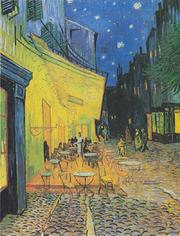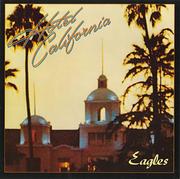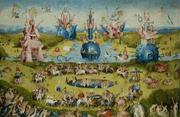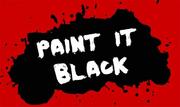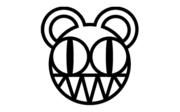Siouxsie & The Banshees Metal Postcard, John Heartfield Photomontage Art
BY K Shabi PUBLISHED 05 Jul 2013
What does Siouxsie & The Banshees' post punk music have to do with anti Nazi German Dada art? Everything! The song lyrics of "Metal Postcard (Mittageisen)" are actually based on Berlin Dadaist John Heartfield's art, powering the song with a strong political meaning and message.

Siouxsie and the Banshees & Modern Art
All you have to do is look at the liner notes for Siouxsie and the Banshees' 1978 album Scream to realize that modern art plays an important role in understanding Siouxsie's song lyrics. Edvard Munch and his painting The Scream are mentioned by name, and the song "Metal Postcard (Mittageisen)" is dedicated to the German artist John Heartfield. On closer analysis, the meaning of the "Metal Postcard" lyrics can be traced back to a single 1935 John Heartfield art piece sarcastically titled Hurrah! Die Butter Ist Alle, translated from the German as Hurray! The Butter is Gone!. What is the meaning?
John Heartfield's Photomontage Die Butter Ist Alle Meaning
What is the meaning and story behind Hurrah! Die Butter Ist Alle? Like Siouxsie's song "Metal Postcard," the political message and meaning behind John Heartfield's photomontage is bold enough to border on the offensive. In this photomontage characteristic of Berlin Dada art, John Heartfield depicts just your typical German family of the period at the dinner table, sitting down to enjoy a nice meal of... machinery and scrap metal? Notice how artfully Heartfield superimposes the metal axe the baby is teething on. Hurrah! Die Butter Ist Alle was made all the way back in 1935, long before the days of Adobe Photoshop.
Once you get past the shocking visual of a "family reunion" where metal is the main course, the swastika wallpaper and the Hitler portrait behind the dinner table indicate the political meaning behind Hurray! The Butter Is Gone. Heartfield is showing you that the "seated family" obviously supports Adolf Hitler and the Nazi party, but why are they eating metal for dinner?
"Metal Postcard (Mittageisen)" Lyrics
The television flickers with another news bulletin
Flints light up the eyes of the seated family.
Metal is tough, metal will sheen
Metal won't rust when oiled and clean.
Metal is tough, metal will sheen
Metal will rule in my master scheme!
With a clockwork jerk
Pluck cogs from fob watches for dinner on Friday
Then recoiling say, "Excuse me!"
Must go recycle my precious machinery...
Metal is tough, metal will sheen
Metal won't rust when oiled and cleaned.
Metal is tough, metal will sheen
Metal will rule in my master scheme!
It's ruling our lives! There is no hope.
Thought I'd drop a line. The weather here is fine...
But day and night it blares
Commanding through loudspeakers:
"Metal is tough, metal will sheen
Metal won't rust when oiled and clean
Metal is tough, metal will sheen
Metal will rule in my master scheme!"
Die Butter Ist Alle and Goring's "Guns or Butter" Speech
Like other Berlin Dadaists, artist John Heartfield was opposed to ultra right-wing conservatism, but particularly that of the Nazi Party. Adept at using dark humor, the politically charged Butter photocollage gives voice to Heartfield's personal opposition to the Nazi party platform. The anti-Nazi photocollage Die Butter Ist Alle! is a political parody showing how ludicrous and grotesque German loyalty to the Nazi party had already become by 1935.
Even though middle class Germans like the family in Heartfield's photomontage were barely scraping by enough to feed their families by the mid 1930s, for some reason the German people still supported the Nazi Party. Chief Nazi leaders like Hermann Goring were quite vocal about their lack of sympathy for the common people's plight, and repeated confirmed that their party's only interest was war and most importantly winning it. The inspiration for Hurray! Die Butter Ist Alle! is commemorated in the German caption at the bottom of the photomontage and came from a particularly inflammatory speech given by Goring in Hamburg, now known as the infamous "guns or butter" speech.
Goring's speech makes the ludicrous assumption that "iron ore" and metal are more vital for the future of the Third Reich and the German empire than having actual food for the people to eat. In Hurrah! Die Butter Ist Alle!, John Heartfield points out the insanity of this statement by showing a family actually celebrating that the "butter is gone." In his unsettling and disturbing photocollage, Heartfield also draws attention to the dehumanization of Germany under the Nazi rule, the middle-class becoming more robotic and unfeeling, now actually surviving on metal instead of food as humans do. As you might guess, the Nazis weren't big fans of Heartfield's art, so the German Dadaist left his homeland and went into exile in 1933.
"Metal Postcard (Mittageisen)" Meaning
Like John Heartfield's Dada art, Siouxsie and the Banshees' song "Metal Postcard" also works on the level of black comedy. In "Metal Postcard (Mittageisen)," most of the lyrics shockingly seem to be written from a Nazi perspective. Siouxsie focuses on the godlike and indestructible aspects that Nazi leaders like Herman Goring seemed to see in "metal," a substance that is obviously non-perishable, especially in comparison with butter. "Metal is tough, metal is clean, metal won't rust when oiled and clean..." Siouxsie sings repeatedly almost as an incantation, even putting on a mad, theatrical voice typical of the "evil genius" when she mentions the "master scheme." While most of the lyrics on "Metal Postcard (Mittageisen)" seem to represent a Nazi sympathizer's viewpoint, lines from the song's third verse like, "There is no hope," on the other hand read as anti Nazi, perhaps confusing some listeners. Obviously, complex political songs like "Metal Postcard" are easy to misinterpret and have caused some people to question whether or not Siouxsie Sioux is actually a racist.
Is Siouxsie Sioux Racist?
Even if songs like "Metal Postcard (Mittageisen)" personally offend you, you've got to give it to Siouxsie Sioux for being brave (and punk) enough to tackle such a taboo and touchy subject as the Nazis head on in her lyrics. Being bold enough to write lyrics from the perspective of the Nazis, Siouxsie Sioux has been accused of being a racist and even a Nazi sympathizer because of her politically blunt songs and even for some of her costume choices, having worn both the Star of David and the swastika during live performances and photo shoots. In a 1979 interview, Siouxsie Sioux directly addressed the racism question by saying, "The swastika I hate, but I also don't identify with blind patriotism either. I couldn't write a song based around Heartfield if I had that attitude."


